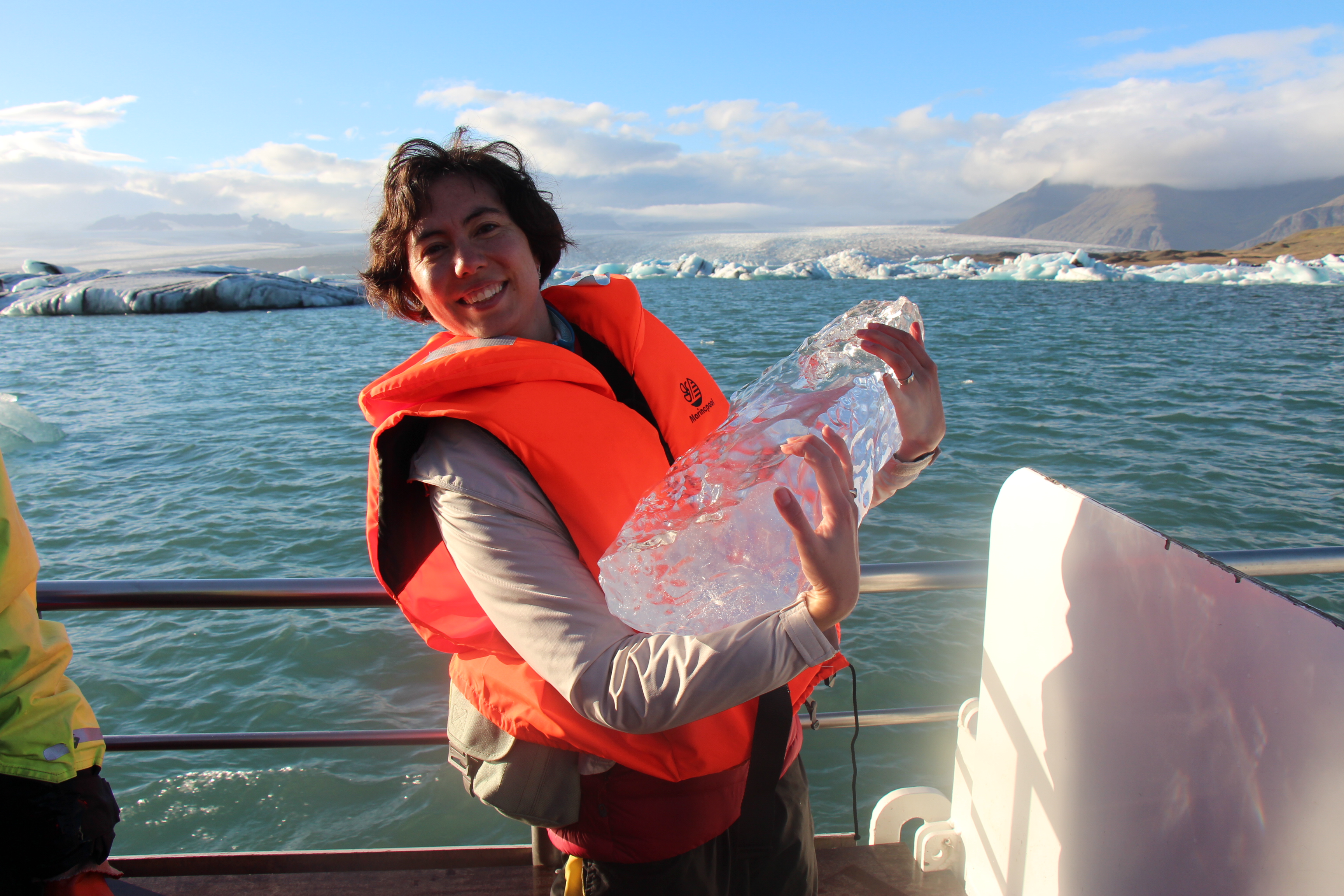
Serina Diniega
Scientist
I grew up on the Island of Oahu, Hawaii. I started at NASA's Jet Propulsion Laboratory as a postdoctoral researcher (modeling lava flows) in fall 2010 and was hired as a Systems Engineer in Spring 2013.
I was an undergraduate math major at the California Institute of Technology and searching for an application of mathematics that would help me make more sense of what I was learning. I’d also been taking the undergraduate geology core classes as they sometimes involved going outdoors. During my junior year, I took Planetary Surfaces with Bruce Murray (whom I later found out had been JPL’s fifth director) and did a presentation on Europa's chaos terrains. I was fascinated to learn about the different models proposed for the formation of these enigmatic features and the way in which scientists tried to discriminate between the models while having very limited observational data. In this, I realized I’d found my application: modeling the evolution of planetary landforms.
I serve as the Investigation Scientist for the Mapping Imaging Spectrometer for Europa (MISE), a near-infrared spectrometer that will help us determine the compositional components of specific features on Europa. From that, we can investigate geologic and chemical processes, and composition and habitability of the ocean.
As an Investigation Scientist, my job is to watch the “interface” between the instrument and the rest of the spacecraft and project so as to identify when changes in design on one side or the other would ripple through the “interface.” I then ensure the relevant folks on both sides are aware and communicating. My focus is on the science of MISE—I have an engineering counterpart (MISE Instrument Engineer Bogdan Oaida) who watches the engineering-related changes and effects across the “interface.” This work involves technical knowledge and attention, but also a huge amount of human interaction and the ability to connect large-picture goals to detailed implementation in both technical and human behavior areas. It's a mix that I find most interesting, frustrating, and rewarding. I was invited to my position as Investigation Scientist in 2016.
A really fun career highlight was in 2013, when my paper on Martian linear gully formation made a big media splash after JPL media relations shared our CO2-blocks-on-dunes field videos. In response to the physics and geology presented, laypeople asked intelligent questions and made thoughtful comments on media sites and YouTube, and some were inspired to write poetry and short stories. It was thrilling for me to see the general public so excited about something that I found exciting.
My main advice is to always be creating opportunities. I’ve been extremely lucky in the opportunities I’ve been invited into at JPL (such as Deputy Project Scientist on a Discovery mission proposal, Investigation Scientist on Europa Clipper, and Science Systems Engineer in the Mars Program Office). But while serendipity has a role in being in the right place at the right time (usually more like being on the right person’s mind at the right time), a person can do a lot to maximize the chances of that happening. Networking in all directions (upwards, downwards, sideways), self-promotion with honest presentation of what you offer and what you want, saying “yes” to growth opportunities where you’re less sure you have the time or capabilities needed, but also saying “no” sometimes to ensure you can focus and develop depth and a solid reputation in a few key areas. All of these are strategies help increase the chances that your name and abilities will be considered when a relevant opportunity comes up.
My other main advice is to be open to opportunities that seem tangential to your overall goal. Sometimes those opportunities give you exposure or experience that will help you stand out from the crowd when you focus back in towards your main goal. Sometimes they help illuminate an alternative path that becomes your main goal. Sometimes they are fulfilling to your person in a completely different way from your main work. And sometimes they’re just fun—everyone needs a bit of fun to keep motivated. I’ve gotten into several “side” projects that end up being the work that other people care the most about (e.g., present-day Martian gully activity) or that just help me keep going (e.g., a trip to help build a school in Uganda, which included painting a solar system mural across the fourth-year classroom wall).
I have tried to learn more about types of discrimination and their effects on people and productivity in this country, and how people have fought to improve systems and behaviors so that more people can be gainfully included in the grand adventures that can make up life and work. These lessons and historical stories inspire me as I work to improve my communities.
I also enjoy trail running (I did a 50K in 2015), as that gets me outdoors and away from my computer, allowing me to think in a way that I don’t often get to when in the office. I like to cook (and then feed people), and especially like experimenting with different oil and flour types when baking desserts, and providing options for those with eating restrictions. I relax by reading books. My favorite author is N.K. Jemisin—especially her "Broken Earth"-series as it blends geological science with an alternate history/future and yet maintains such familiar human and cultural interactions and limitations.
Planetary science is a global profession.

